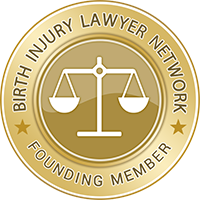Asphyxia Injuries or Death/Hypoxic and Anoxic Encephalopathy
Asphyxia is a medical term used for lack of oxygen. Birth Asphyxia refers to the lack of oxygen in a baby’s brain and other organs before, during or right after birth. Before birth, oxygen is brought to the fetus’ brain and other organs through the blood supply. Lack of oxygen will lead to cells not working properly which will result to waste product build up and cause damage either temporary or permanent. Aside from the brain, organs usually affected by the decrease in oxygen are the heart and blood vessels, gastrointestinal tract, lungs and kidneys.
Causes of Birth Asphyxia
Causes which can lead to the lack of oxygen among babies before or during the birth process include inadequate oxygen levels in the mother's blood, a mother’s low blood pressure, inadequate relaxation of the uterus during labor that prevents oxygen circulation to the placenta, placental abruption, compression of the umbilical cord, poor placenta function that may occur with high blood pressure or in post-term pregnancies, difficult delivery, and a serious infection in the mother or baby.
Some causes of decreased oxygen among babies after birth are severe anemia, low blood pressure, respiratory problems and heart or lung diseases, and baby's airway not being formed properly or being blocked.
Symptoms of Birth Asphyxia
Symptoms commonly manifested by babies before birth are abnormal heart rate or rhythm and an increased acid level in a baby's blood. During birth, a baby with asphyxia will have a bluish or pale skin color, low heart rate, weak muscle tone and reflexes, weak cry, gasping or weak breathing.
The treatment for Birth Asphyxia depends on several factors such as the baby's age, overall health and medical history, severity of the baby's condition, and baby's tolerance for specific medications, procedures or therapies.
Encephalopathy
Delay in the treatment of Birth Asphyxia can lead to brain injuries such as Encephalopathy. Deprivation of oxygen in the brain cells can lead to abnormal brain function otherwise known as either hypoxic or anoxic Encephalopathy. Hypoxic Encephalopathy is due to lower or decreased supply of oxygen to the brain while Anoxic Encephalopathy is due to lack of oxygen in the brain. The terms anoxic or hypoxic are sometimes used synonymous to each other in relation to encephalopathy. The longer that the brain cells are deprived of oxygen, the more damage it will incur or it may lead to death.
Aside from lack of oxygen to the brain, there are a number of other reasons that an infant can develop encephalopathy which leads to various symptoms. However, one symptom present in all cases of encephalopathy is an altered mental state.
Hypoxic and Anoxic Encephalopathy may be mild or severe. Mild cases can lead to temporary intellectual, visual, and motor disturbances, while severe cases can cause permanent brain damage within five minutes.
During pregnancy, there are many conditions that may lead to the baby developing hypoxic and anoxic encephalopathy such as placenta abruptio and placenta previa. Oxygen delivery to a baby’s brain cells can also be compromised during delivery especially in situations such as umbilical cord compression. To prevent brain damage or even death, it is very important to restore the oxygen supply immediately.
Find an Experienced Birth Injury Attorney in your Local Community
 Find A Lawyer in Columbus, OH
Find A Lawyer in Ohio
Find A Lawyer in Any State
Find A Lawyer in Columbus, OH
Find A Lawyer in Ohio
Find A Lawyer in Any State
